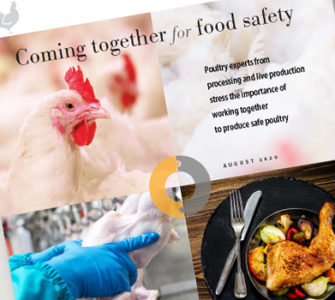Reaction of poultry company customers to FSIS performance standards varied
Publication of USDA performance standards prompted some poultry company customers to refuse product from processing plants in Category 3, according to participants at a food safety roundtable.
When USDA’s Food Safety and Inspection Service (FSIS) results were initially published, there was a lot of misunderstanding about the categories, and it’s taken a lot of education to explain the FSIS process, said Juan Devillena, director of quality assurance and food safety, Wayne Farms.
There are still customers who do not want poultry from processing plants in Category 3 and will only take products from plants in Categories 1 or 2, he said.
Categories 1 or 2 means the plant has met Salmonella performance standards, while Category 3 means the processing plant has exceeded the Salmonella standard.
“I believe the situation is stable now, but I also believe it’s still having a big impact,” DeVillena said at the roundtable “Coming Together for Food Safety.” “It’s definitely a burden, especially in the sales arena.”
Affects customer contracts
Douglas Fulnechek, DVM, senior public health veterinarian, Zoetis, and formerly a supervisory veterinary medical officer, FSIS, said some contracts poultry companies have with fast-food customers stipulate that the poultry supplied will come only from plants in Categories 1 and 2.
He said he has been asked on several occasions by poultry companies with plants in Category 3 to conduct an investigation and analysis similar to what FSIS would do; then he writes a report that the poultry companies can provide to fast-food customers to show their commitment to improvement.
On the West Coast, the situation has been a bit different, at least for some companies, said Robert O’Connor, DVM, senior vice president, technical services, Foster Farms.
Initially the company had requests from customers who asked about how the company’s processing plants were faring on FSIS categories.
“We got a form letter from one large box-store customer; we replied with a form letter and never heard from them again,” he said.
O’Connor believes the original intention of FSIS was to improve food safety by increasing customer pressure, but “I don’t really feel like the categories are having the impact on the industry that FSIS intended them to.”
Customers realize the sampling program and categorization of processing plant results are more complex and challenging than they originally appeared, he said.
Read the rest of this article and download our “Coming Together for Food Safety” special report.
Posted on August 26, 2021

















